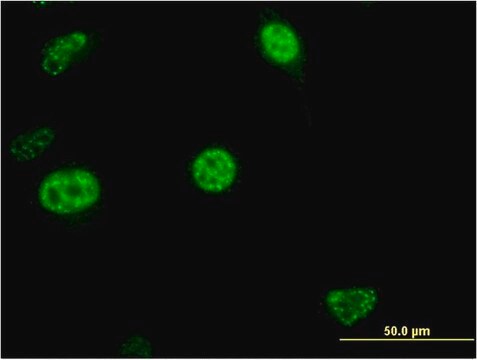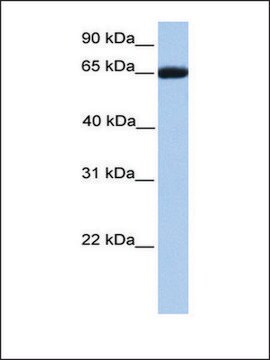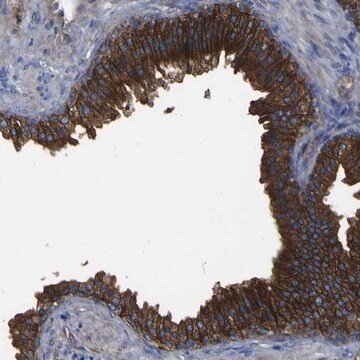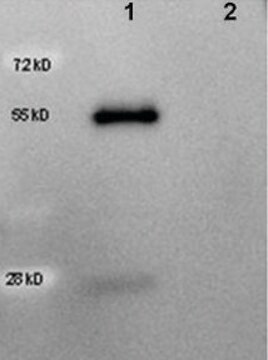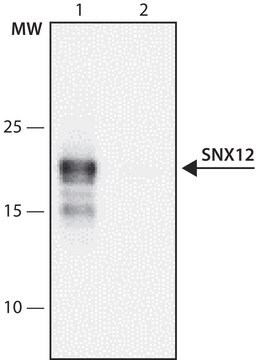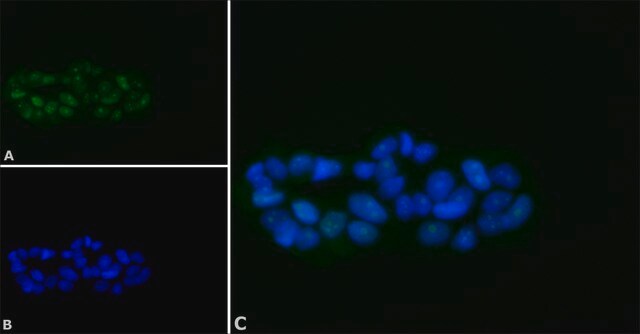SAB1402716
Monoclonal Anti-CD151 antibody produced in mouse
clone 1B2, purified immunoglobulin, buffered aqueous solution
Synonim(y):
GP27, MER2, PETA-3, RAPH, SFA1, TSPAN24
About This Item
Polecane produkty
pochodzenie biologiczne
mouse
białko sprzężone
unconjugated
forma przeciwciała
purified immunoglobulin
rodzaj przeciwciała
primary antibodies
klon
1B2, monoclonal
Formularz
buffered aqueous solution
masa cząsteczkowa
antigen ~53.94 kDa
reaktywność gatunkowa
human
metody
indirect ELISA: suitable
western blot: 1-5 μg/mL
izotyp
IgG2aκ
numer dostępu NCBI
numer dostępu UniProt
Warunki transportu
dry ice
temp. przechowywania
−20°C
docelowa modyfikacja potranslacyjna
unmodified
informacje o genach
human ... CD151(977)
Powiązane kategorie
Opis ogólny
Immunogen
Sekwencja
MGEFNEKKTTCGTVCLKYLLFTYNCCLWLAGLAVMAVGIWTLALKSDYISLLASGTYLATAYILVAGTVVMVTGVLGCCATFKERRNLLRLYFILLLIIFLLEIIAGILAYAYYQQLNTELKENLKDTMTKRYHQPGHEAVTSAVDQLQQEFHCCGSNNSQDWRDSEWIRSQEAGGRVPDSCCKTVVALCGQRDHASNIYKVEGGCITKLETFIQEHLRVIGAVGIGIACVQVFGMIFTCCLYRSLKLEHY
Postać fizyczna
Oświadczenie o zrzeczeniu się odpowiedzialności
Nie możesz znaleźć właściwego produktu?
Wypróbuj nasz Narzędzie selektora produktów.
Kod klasy składowania
10 - Combustible liquids
Klasa zagrożenia wodnego (WGK)
WGK 1
Temperatura zapłonu (°F)
Not applicable
Temperatura zapłonu (°C)
Not applicable
Wybierz jedną z najnowszych wersji:
Certyfikaty analizy (CoA)
Nie widzisz odpowiedniej wersji?
Jeśli potrzebujesz konkretnej wersji, możesz wyszukać konkretny certyfikat według numeru partii lub serii.
Masz już ten produkt?
Dokumenty związane z niedawno zakupionymi produktami zostały zamieszczone w Bibliotece dokumentów.
Nasz zespół naukowców ma doświadczenie we wszystkich obszarach badań, w tym w naukach przyrodniczych, materiałoznawstwie, syntezie chemicznej, chromatografii, analityce i wielu innych dziedzinach.
Skontaktuj się z zespołem ds. pomocy technicznej